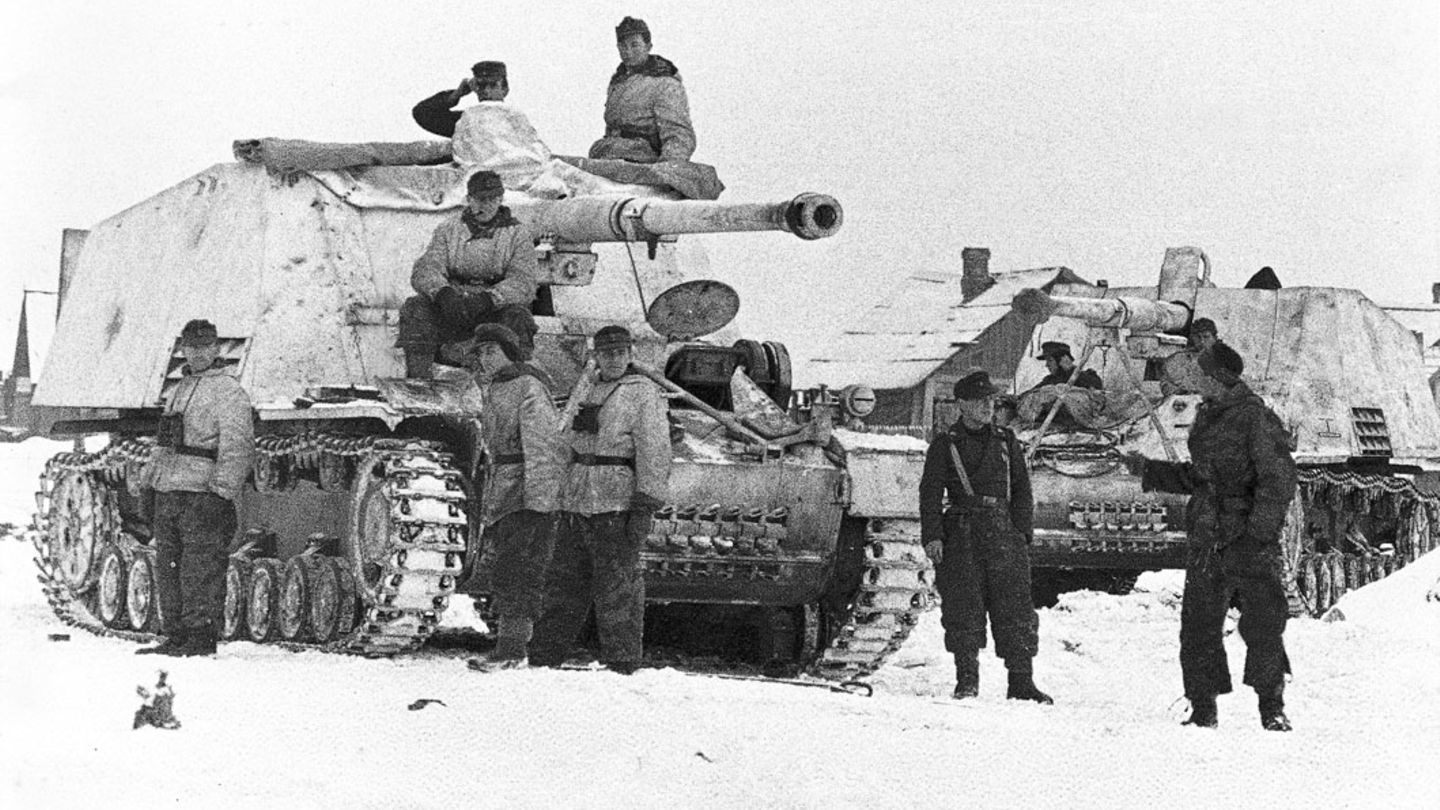The legendary eight-eight was the most powerful tank cannon of the Second World War. In the case of the rhino, it was mounted on a simple chassis. It offered no protection for the crew.
The German Wehrmacht did not start the Second World War with the best types of tanks. The French Char B1 tanks and the British Matildas were at least equal to the German types II, III and IV, as the larger Panzer IV was initially equipped with a cannon that could not penetrate armor. Only the far more intelligent use of armored weapons led to the victory over France. In Russia, the Germans met the Soviet types T-34 and KV-1 as early as 1941 – these giants could not be harmed by the German cannons in caliber 5 cm from the front (read: “T-34 – this tank was Stalin’s miracle weapon”).
Small chassis and big guns
The German leadership faced the problem that it was not possible to mount large-caliber turrets on the small chassis. The German economy, however, was unable to create huge new manufacturing facilities like the USA and the USSR were able to do. So one had to make do. The first idea turned out to be a deadly mistake: huge cannons were built on the small tubs. There was no turret for this, and not even an armored fighting compartment for the gunners. The main weapon “stood” on the roof of the chassis. The crew was protected from rifle bullets all around by a kind of fence made of armored plates. The Sturmgeschütz III with long cannon proved to be far more effective (Read: “Sturmgeschütz III – Hitler’s Most Effective Tank Killer”)
Shortly before the world’s largest tank battle began near Kursk in the summer of 1943, the rhinoceros was put into service. The huge German eight-eight was chosen as the main weapon. Originally it was an anti-aircraft gun, but it was excellently suited to cracking even the heaviest armor. In June 1942, Hitler had requested the development of a new anti-tank gun based on the 88 mm Flak 41. The PaK 43 was much more crouched than the flak frame, no longer rotatable and dispensed with equipment that was essential for an anti-aircraft gun. What remains is the huge cannon. With a muzzle velocity of over 1100 meters per second, it could penetrate 136 millimeters of armor at 2000 meters at an angle of impact of 60 degrees – if the hard core ammunition (tank shell 40/43) was available. The variant of the rhinoceros – PaK 43/1 (L / 71) – was even stronger than the tiger. It was mounted on Gun Car III / IV, an offshoot of the Panzer IV chassis.
Can only be used as an anti-tank gun
It quickly became apparent that the heavy cannon could not compensate for the massive problems of the concept. Since the cannon – as with all tank destroyers – could not be rotated, the model was neither suitable for attack nor for combat in motion. But because of the height of almost three meters, the tank destroyer usually found no natural cover. A skirmish from a lurking position, such as the Sturmgeschütz III successfully practiced, was not possible in this way.
The inadequate armor was just as fatal. Here the rhinos differed from the optically similar but heavily armored tank destroyer Ferdinand. The gunners in particular were not even protected from machine gun fire. The Russians used so-called anti-tank rifles in large numbers. These large-caliber rifles easily penetrated the ten millimeter armor. Since the fighting area was open at the top and not protected at all, the gunners were also an easy target for artillery strikes. Once a rhinoceros was spotted by the enemy, his fate was usually sealed. The huge cannon also shifted the vehicle’s center of gravity very unfavorably upwards, which meant that its ability to move in the terrain suffered.
In ideal circumstances, however, the rhinoceros was a powerful weapon. When the tank destroyers were positioned behind the front line in prepared positions to shoot down attacking tanks at great distances, they benefited from the range of the eight-eight. During the fighting for Vitebsk in December 1943, a rhinoceros under Captain Albert Ernst shot down 14 Soviet tanks in one day. In March 1945, a rhinoceros succeeded in taking out one of the new heavy US M-26 Pershing tanks.
Later tank destroyers changed the concept
The chaotic combat situations in the second half of the war often did not allow such ideal conditions. The heavy tank destroyer divisions in which the rhinos were organized were used as fire brigades to seal off enemy breaches. A task that would have required normal battle tanks with stronger armor. Because of the vehicle’s high vulnerability, the rhinoceros never achieved such a legendary reputation as the tiger tank. There were also organizational deficiencies. The heavy tank destroyer detachments did not have their own light reconnaissance vehicles, so it was difficult to adjust to the enemy’s operations.
Towards the end of the war the Germans learned from these mistakes: Both the Jagdpanzer IV and the mini-tank Hetzer were built extremely flat in order to use every unevenness of the terrain for camouflage (read: “Jagdpanzer 38t” Hetzer “- the mini tank with the big cannon “). The Jagdpanther was a superior vehicle in every respect, but it was also much more elaborate than the simple rhinoceros. A total of 473 tank destroyers were built.
David William is a talented author who has made a name for himself in the world of writing. He is a professional author who writes on a wide range of topics, from general interest to opinion news. David is currently working as a writer at 24 hours worlds where he brings his unique perspective and in-depth research to his articles, making them both informative and engaging.




